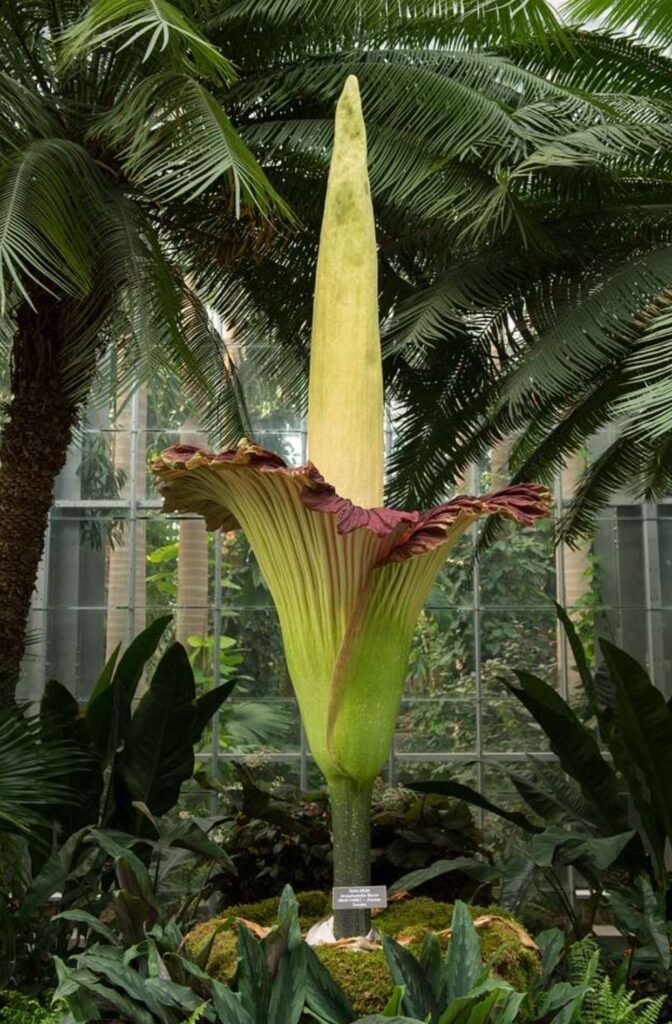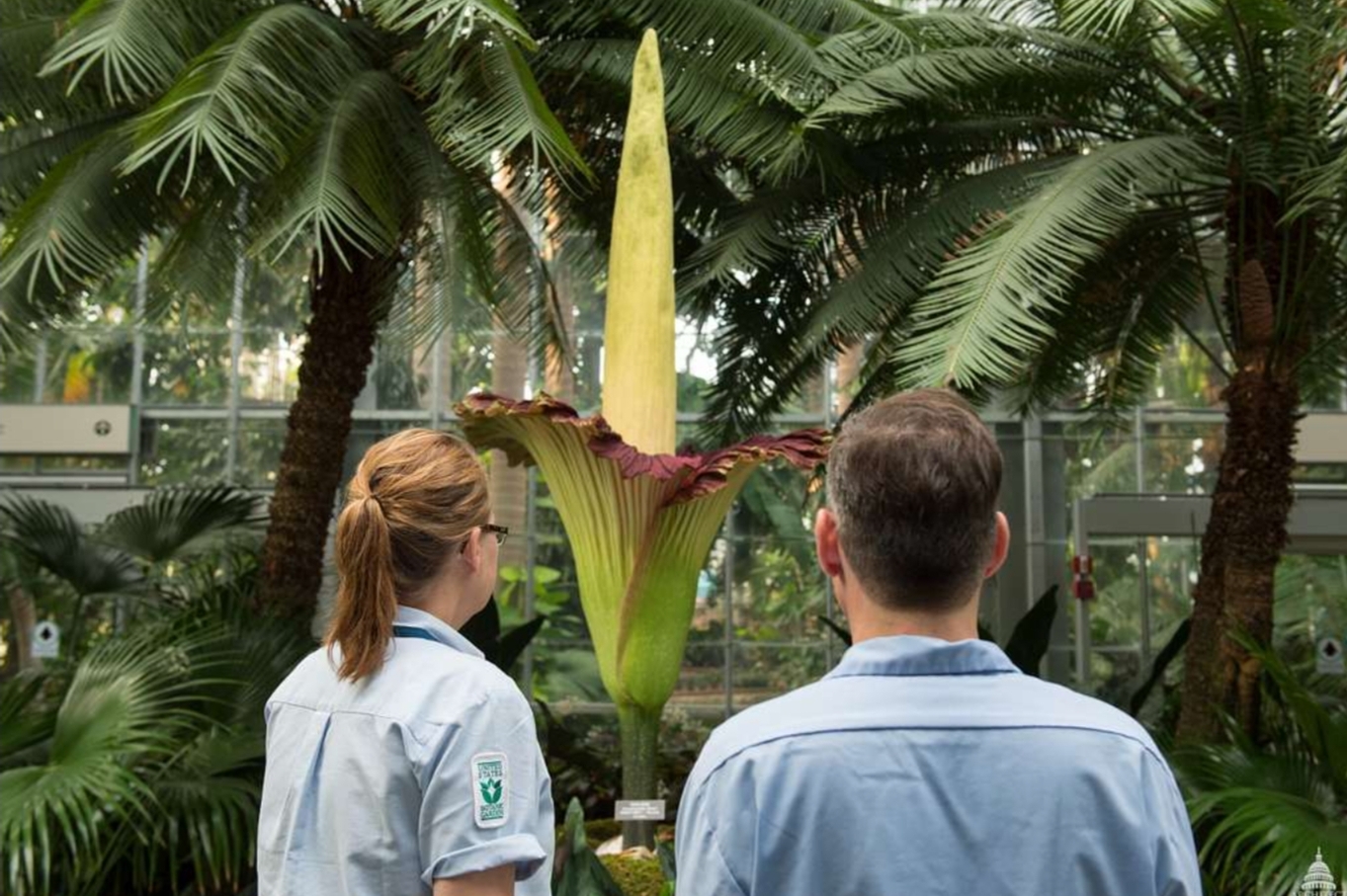The Stinkflower: Unveiling Nature’s Oddest Creation

In the vast and diverse world of flowers, one might expect to encounter a variety of scents, from the sweet aroma of roses to the delicate fragrance of lilies. However, nature has a way of surprising us, and there is one flower that stands out for its peculiar and rather unpleasant odor. Meet the “Stinkflower,” a remarkable botanical oddity whose fragrance, believe it or not, closely resembles the smell of a fart.
The Stinkflower’s Scientific Name:
The official name of this unique flower is Amorphophallus titanium, although it is more commonly referred to as the “corpse flower” or “titan arum.” This tropical plant is native to the rainforests of Sumatra, Indonesia, and its scientific name reflects its rather phallic appearance. The odor it emits has garnered it the infamous nickname “Stinkflower.”
Appearance of the Stinkflower:
The Stinkflower is a massive plant that can reach heights of up to ten feet. Its most distinctive feature is its inflorescence, which consists of a tall, spire-like structure covered by a large, petal-like structure known as a spathe. The spathe can be as wide as three feet and comes in various shades of deep red or green, making it an imposing sight.
Life Cycle and Bloom:
One of the most intriguing aspects of the Stinkflower is its bloom cycle. It is not an everyday occurrence; in fact, the flower can go years between blooming. When it finally does, the event is eagerly anticipated by botanists, horticulturalists, and curious onlookers alike. The flowering process unfolds over several days and is a remarkable spectacle to witness.
Foul Odor – A Unique Adaptation:
The Stinkflower’s offensive odor serves a specific purpose in nature. Unlike most flowers that rely on their pleasant scents to attract pollinators, the Stinkflower employs its repugnant odor as a clever strategy. The smell closely resembles that of a rotting carcass or, as some would say, flatulence. This scent lures carrion beetles and flies, which are typically drawn to decaying matter. As they enter the spathe in search of food or a place to lay their eggs, they inadvertently collect and deposit pollen, facilitating the plant’s reproduction.
While the scent may be nauseating to humans, it’s essential for the survival of the Stinkflower and contributes to the biodiversity of its native ecosystem.
Cultivation and Conservation:
Cultivating the Stinkflower can be a challenging endeavor due to its unique requirements and infrequent blooming. It requires specific conditions, including high humidity and warm temperatures. Many botanical gardens around the world house these plants, and they often become the center of attention when they do bloom.
Conservation efforts are crucial to protecting this peculiar plant in its natural habitat, as deforestation threatens its survival. Organizations and enthusiasts work together to ensure the longevity of the Stinkflower and its role in the ecosystem.
Conclusion:
The Stinkflower, while notorious for its unpleasant odor, is a testament to the diversity of nature and the ingenious ways in which plants adapt for their survival. Its captivating bloom, though infrequent, continues to captivate the curiosity of scientists and nature enthusiasts. So, next time you encounter an unpleasant smell reminiscent of a fart in a botanical garden, you might just be in the presence of the intriguing Stinkflower, a testament to nature’s peculiar and marvelous creations.







